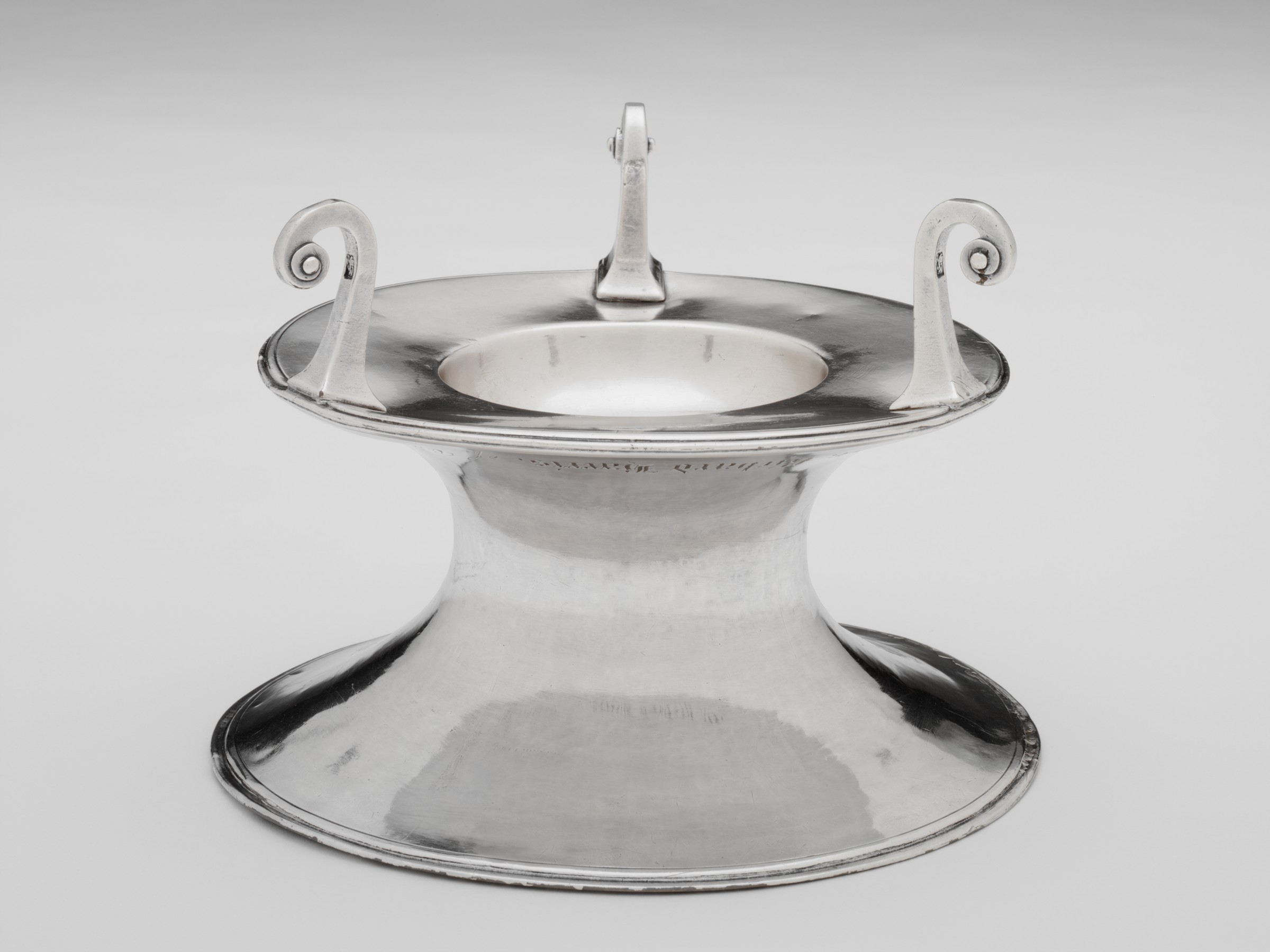Jose Glover, the original owner, left Britain in 1638 in hopes of starting the first printing press in America. He died while crossing the Atlantic, and his wife went on to marry the first president of Harvard College. The year that Glover’s Great Salt arrived in the Massachusetts Bay Colony is when the first enslaved Africans arrived. Glover’s experience forms a kind of inverse Middle Passage—his was a carefully documented death during the trans-Atlantic journey. Contrast this with the countless unknown Africans who died crossing the ocean, many of whom were captured and sold into slavery because they were teachers and Quranic scholars who’d traveled to coastal West African trading posts to purchase paper from Europeans.
My installation is centered on a museum display that holds approximately 40 electronic synthesizer modules, connected with multicolored cables. Considered together, these components form a laptop-free modular synthesizer, which powers the audio for the installation. Some of the synthesizers’ brushed aluminum faceplates are engraved with excerpts from John Winthrop’s “The City upon a Hill” (1630), a sermon delivered while crossing the Atlantic from Britain to New England. The synthesizer modules sprawl in a nonlinear fashion, inviting the text to be read in the same open-ended, neither-beginning-nor-end way. On top of the museum display is a one-to-one scale replica of The Great Salt, made from salt.
Surrounding this display are three marímbulas (also known as bass kalimbas or bass thumb pianos; the Afro-Caribbean instrument is a New World adaptation of the African lamellophone, or “thumb piano”). These can be played by the audience. The marímbulas are unamplified, but each one has been modified to provide voltage information that audibly interacts with the electronic sound installation in various ways. Visitors can pluck out a simple melody or rhythm and will hear the piece shift and respond in real time.
This sound installation is unusually dynamic. The overall length changes (in response to audience marímbula activity) and moves between several distinct sections. Among other things, it uses granular synthesis (an audio-processing technique that divides sounds into tiny “grains”) and contains references to 17th-century European classical music and African lamellophone-based song structures. The Great Salt cycles, but even then this is not pre-recorded audio on loop; it’s constructed to breathe and shift with large- and small-scale variation each cycle.
I think of my modular synthesizer composition for The Great Salt as a clock. Specifically, it’s a complex arrangement of multiple, interdependent clocks that modulate each other. Literally. No computer is involved. You simply plug it in the system I’ve patched together and enjoy hearing it interact with itself. And if you pluck the thumb pianos, which have only three notes each to encourage people to play (perfect for people who consider themselves non-musicians), you transform the simple options into some more beautiful and more complex ones by playing together.
I’m composing rhythmic, tonal, textural, and other sonic events and structures across a variety of different timescales, from the overall, elastic running length of the piece to shorter arrangements of melody lines, to the microseconds of audio grains. When this interdependent clockwork is displayed in a standard museum vitrine, it enters an environment built to arrest the flow of time. Museums freeze time. Music melts it. Through this installation, museumification and the wily polymorphic clock intertwine, as the impulse to nonlinearity plays out in the fragments of colonial language engraved on the modules themselves.
On Thursday, December 6, Clayton will perform Salt Wood Salt Wire Salt Salt, along with the new music ensemble Bent Duo, at Adolphus Busch Hall. The composition serves as a companion piece to his Great Salt installation.
Jace Clayton ’97 is an artist and writer based in New York City. Also known for his performances as DJ /rupture, Clayton creates interdisciplinary works that explore interactions among sound, memory, and public space. His sonic experiments have been exhibited at the Andy Warhol Museum and Barnes Foundation, and his works travel internationally in the form of music, writing, and frequent live performances. Clayton joined the faculty of Bard College in 2013 and recently served as the Nannerl Keohane Distinguished Visiting Professor at the University of North Carolina at Chapel Hill and Duke University. He has been an artist-in-residence with the Lower Manhattan Cultural Council and the Eyebeam Art + Technology Atelier, as well as a USC Annenberg/Getty Arts Journalism Fellow. He is the author of Uproot: Travels in 21st-Century Music and Digital Culture (Farrar, Straus and Giroux, 2016).




